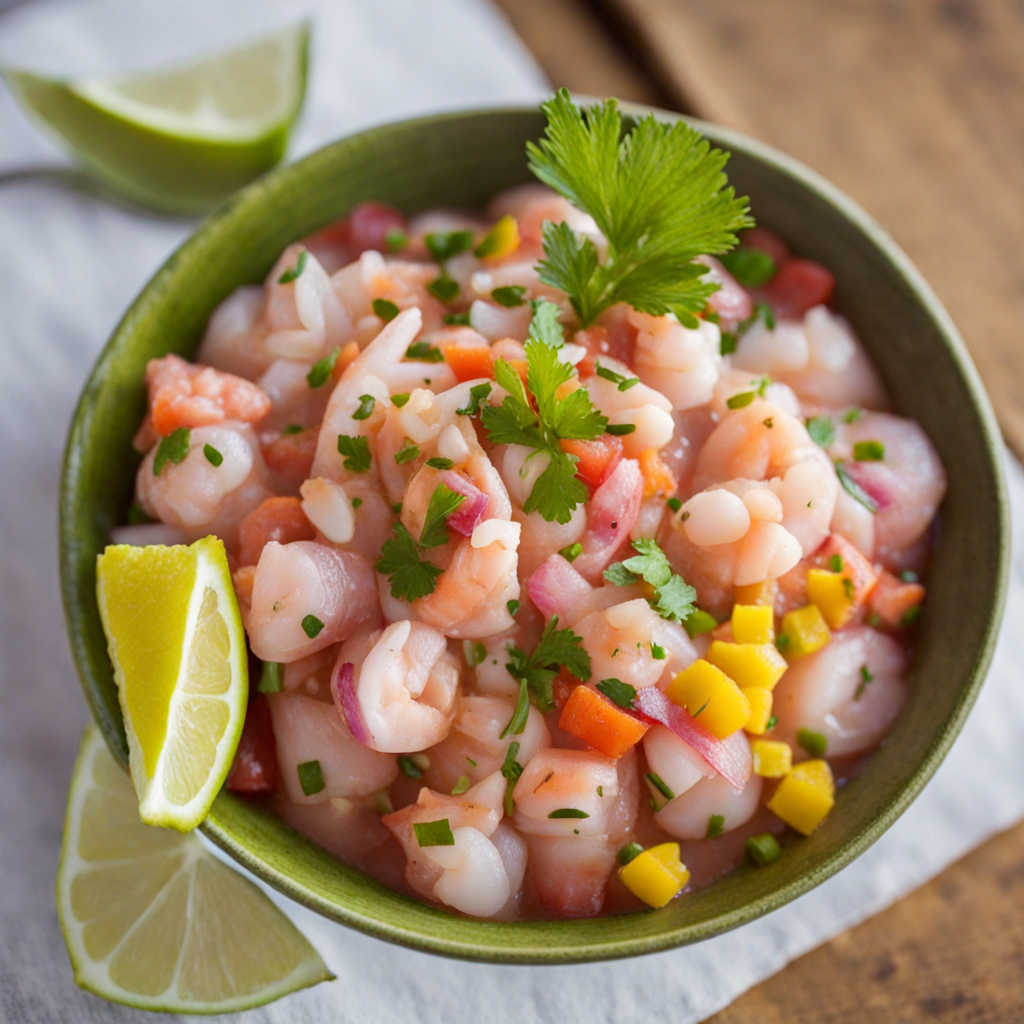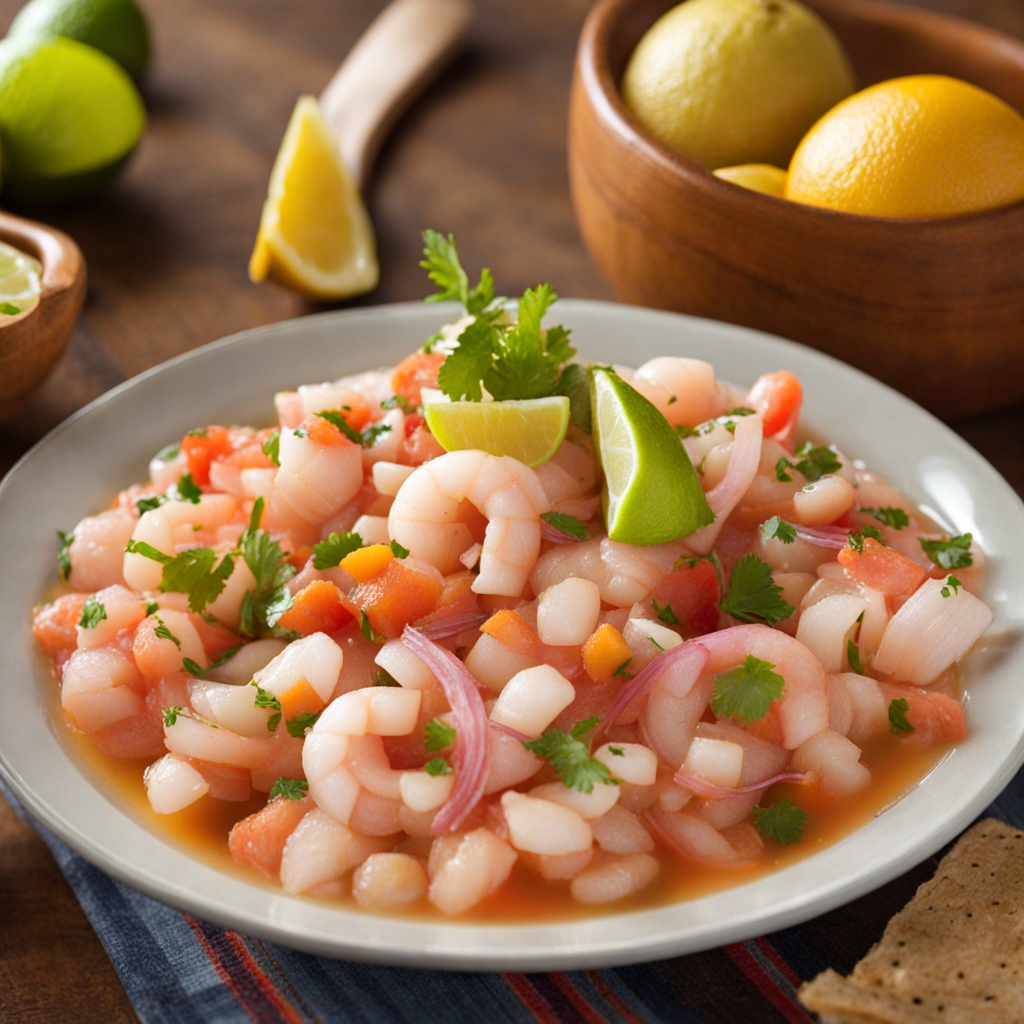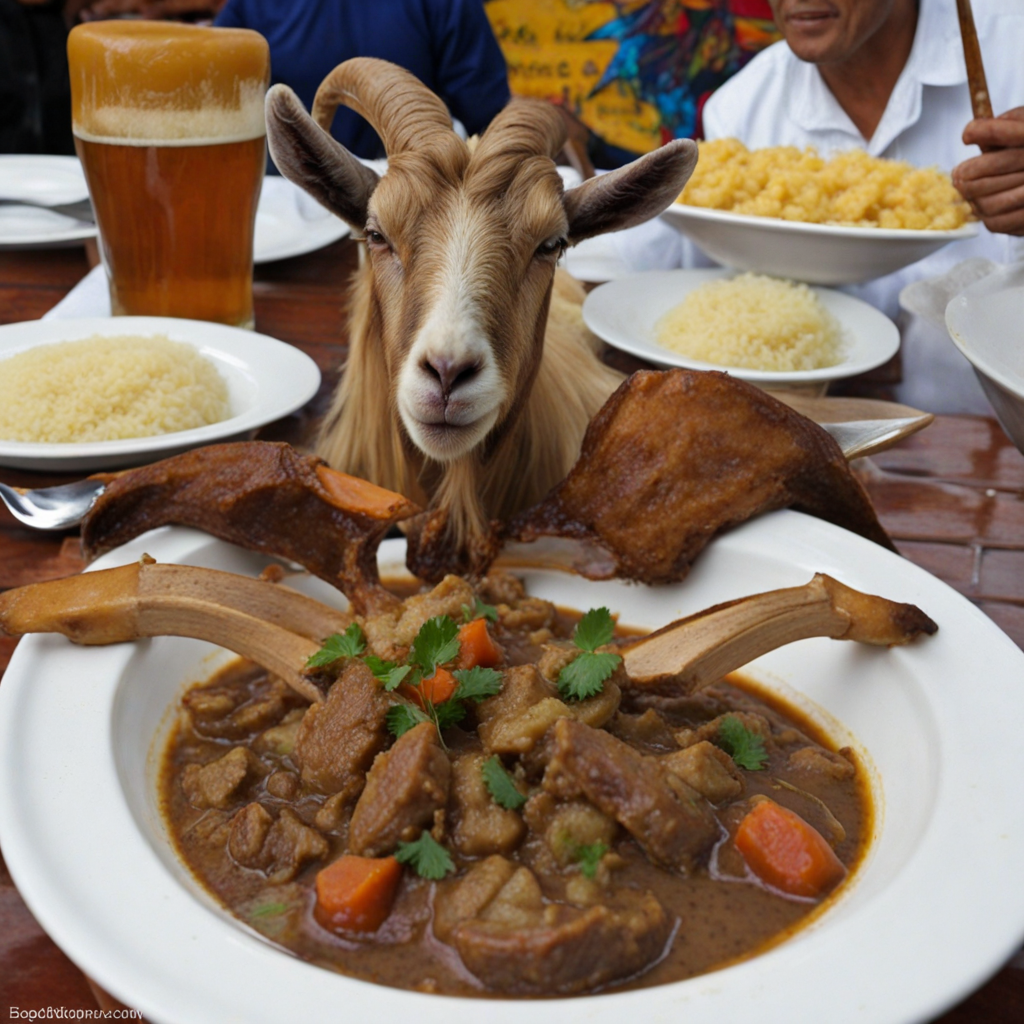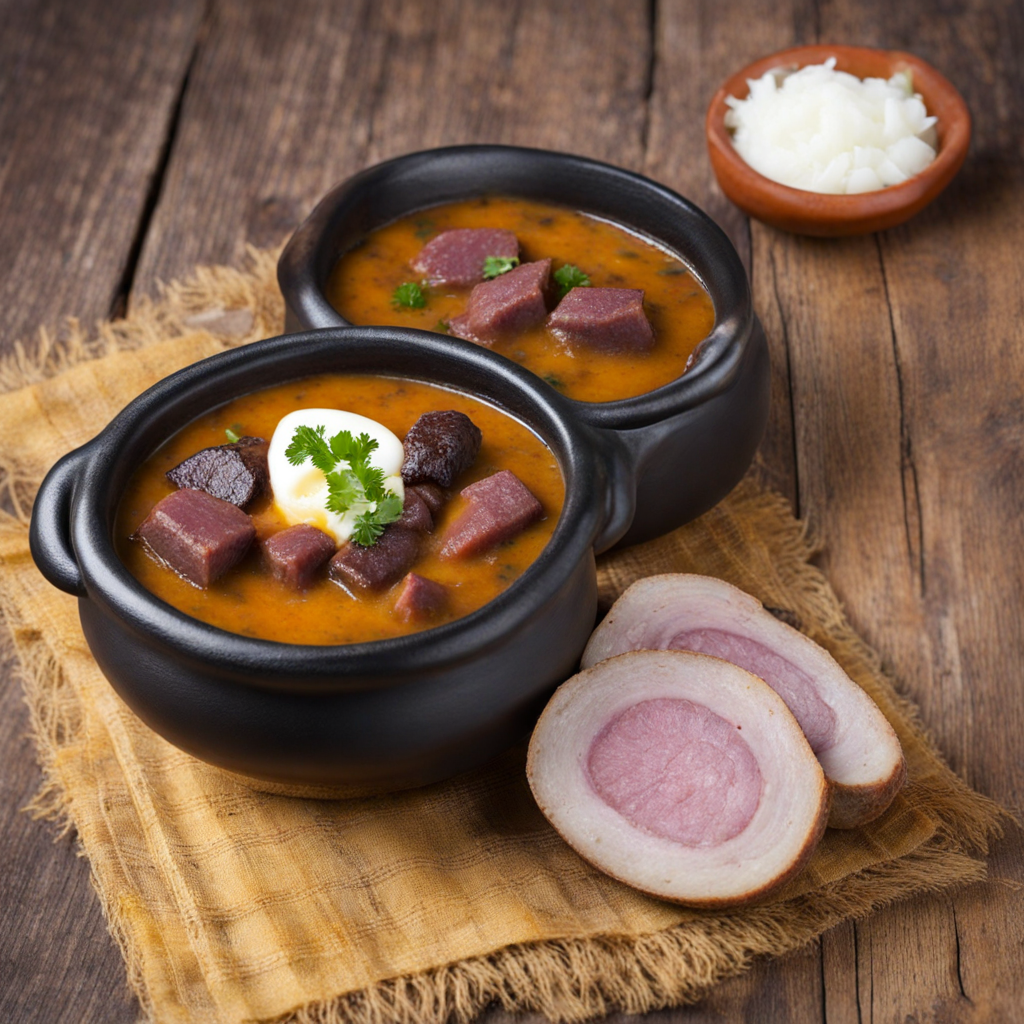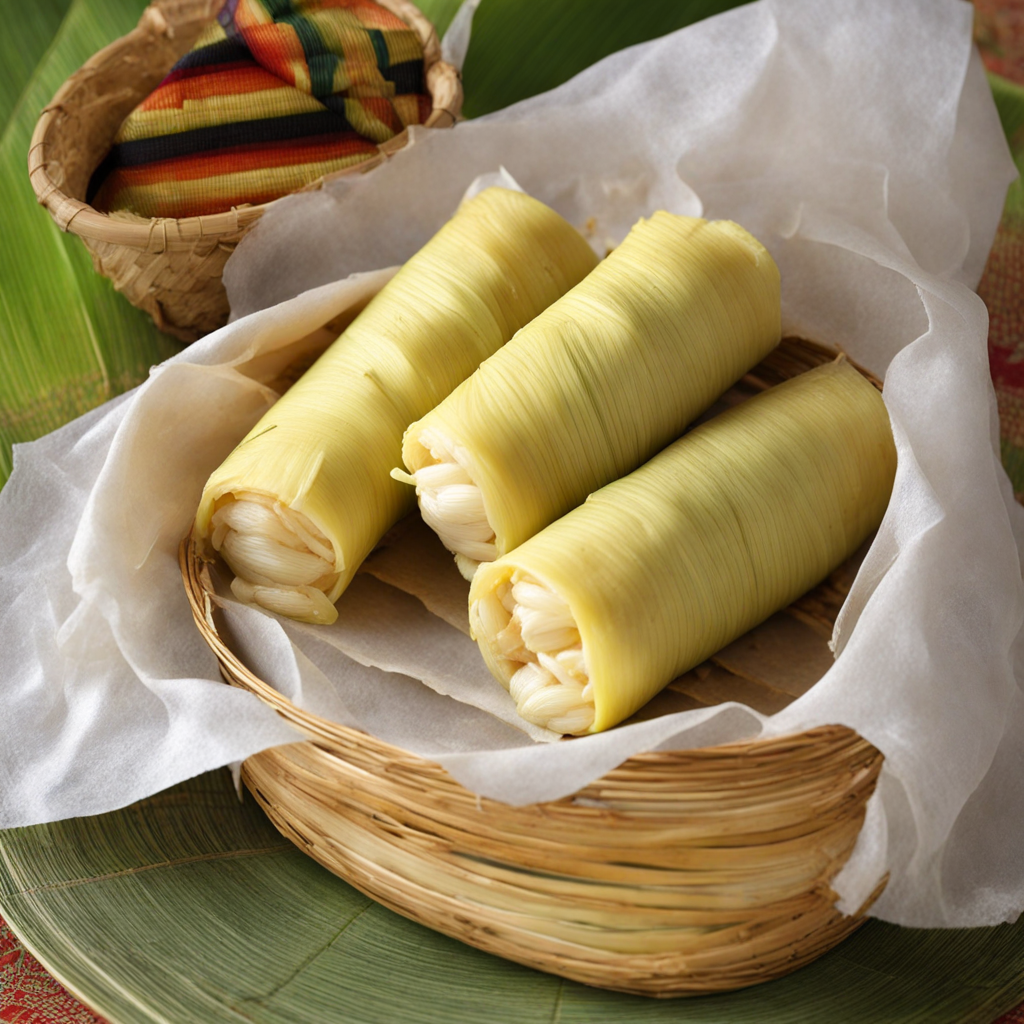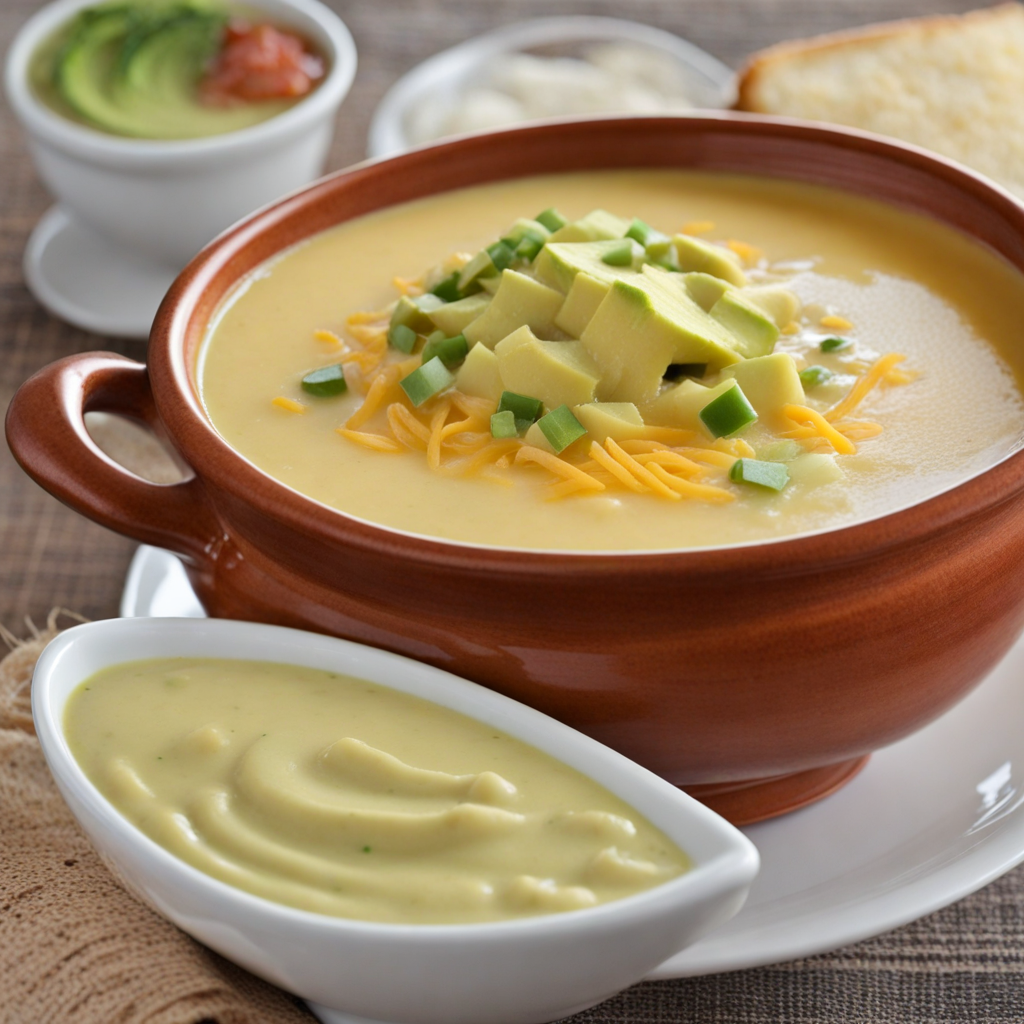Ceviche
Ceviche is a vibrant and refreshing dish that showcases the culinary traditions of Ecuador, particularly along its coastal regions. At its core, ceviche is made from fresh, raw seafood, typically fish, which is marinated in freshly squeezed lime juice. This acidity from the citrus not only imparts a zesty flavor but also "cooks" the seafood, transforming its texture while preserving its delicate qualities. The fish is often diced into small cubes, creating a beautiful mosaic of colors and textures that is both inviting and appetizing. In Ecuador, ceviche often incorporates a variety of additional ingredients that enhance its flavor profile. Along with the fish, you may find diced tomatoes, onions, cilantro, and occasionally avocado, all mixed together to create a medley of fresh tastes. The dish is frequently seasoned with salt and a hint of spice, sometimes from chili peppers, offering a delightful balance of heat and acidity. Ecuadorian ceviche is typically served with sides such as popcorn, plantain chips, or corn, adding a satisfying crunch that complements the softness of the seafood. One of the unique characteristics of Ecuadorian ceviche is its regional variations, with each area adding its own twist. For instance, in some coastal towns, shrimp ceviche is particularly popular, while others might favor a blend of different seafood, including squid and octopus. The dish is often enjoyed as a light meal or appetizer, perfect for warm weather and beachside gatherings. With its bright flavors and fresh ingredients, Ecuadorian ceviche is a culinary experience that is not only delicious but also a true celebration of the country's rich maritime culture.
How It Became This Dish
Ceviche: A Culinary Journey Through Ecuador's Coastal Heritage Ceviche, a dish celebrated for its vibrant flavors and fresh ingredients, holds a special place in the culinary landscape of Ecuador. This dish, which typically features marinated raw fish or seafood, has a rich history intertwined with the cultural fabric of the region. Its origins, cultural significance, and evolution over time reveal a fascinating narrative that highlights the intersection of indigenous practices, Spanish influence, and modern gastronomic trends. Origins of Ceviche The roots of ceviche can be traced back to ancient civilizations along the Pacific Coast of South America, where indigenous peoples relied heavily on the bounty of the ocean for sustenance. Archaeological evidence suggests that the Moche civilization, which thrived in what is now Peru around 100-800 AD, may have consumed fish marinated in a mixture of fermented fruit juices. However, it is in Ecuador that ceviche finds its most iconic expression. The word "ceviche" is believed to have derived from the Spanish word "escabeche," which refers to a method of pickling or marinating fish. The arrival of the Spanish in the 16th century brought new culinary techniques and ingredients, including citrus fruits such as lime and lemon, which became essential in the ceviche preparation process. The indigenous people adapted their traditional practices, incorporating these new ingredients into their dishes, leading to the birth of modern ceviche. Cultural Significance Ceviche is more than just a dish in Ecuador; it is a cultural emblem that reflects the identity and heritage of coastal communities. In Ecuador, ceviche is often enjoyed as a social food, bringing families and friends together to share in the experience. The dish is typically served during festive occasions, celebrations, and gatherings, highlighting its role as a symbol of unity and communal celebration. In many coastal towns, ceviche is a staple in local markets, where vendors proudly display their preparations, each with its unique twist. The dish is often accompanied by sides such as plantain chips, corn, or avocado, enhancing the sensory experience and creating a culinary ritual that is deeply ingrained in the local culture. The preparation and consumption of ceviche are often accompanied by lively conversations, laughter, and the sounds of the ocean, further enriching its cultural significance. Development Over Time As Ecuador's ceviche evolved, regional variations began to emerge, each reflecting the local ingredients and culinary traditions. One of the most notable distinctions is between the coastal and highland versions of ceviche. Coastal ceviche, often made with fresh fish such as corvina or shrimp, is typically marinated in lime juice, mixed with onions, cilantro, and occasionally accompanied by aji sauce for a spicy kick. This version is characterized by its vibrant flavors and refreshing nature, making it a popular dish in the warm coastal climate. Conversely, the highland ceviche, particularly prevalent in cities like Quito, is prepared differently. It often features chochos (lima beans) and is served warm, with a thicker sauce that may include tomato and spices. This variation reflects the broader culinary practices of the highland regions, where ingredients and flavors differ from those of the coast. The 20th century saw a significant transformation in the perception of ceviche, particularly with the rise of gastronomic tourism. Ecuador's diverse ecosystems and rich marine life attracted food enthusiasts and chefs, leading to a renaissance in the appreciation of traditional dishes. High-profile culinary events, such as the "Ceviche Festival," celebrated the dish's versatility and encouraged chefs to innovate while remaining respectful of its roots. Moreover, the globalization of food culture has brought ceviche to international attention. Chefs around the world have experimented with the dish, incorporating various ingredients and techniques, thus creating fusion ceviches that reflect a broader culinary landscape. While these adaptations have introduced new audiences to ceviche, they have also sparked discussions about authenticity and the importance of preserving traditional practices. Contemporary Ceviche Today, ceviche is not only a staple of Ecuadorian cuisine but also a proud representative of the nation's culinary identity on the global stage. Ecuadorian chefs are recognized for their skill in elevating ceviche to new heights, often incorporating local ingredients and innovative techniques while paying homage to traditional methods. The dish has become a canvas for creativity, allowing chefs to experiment with flavors, presentations, and pairings. In recent years, the seafood industry has also embraced sustainable practices, ensuring that the ingredients used in ceviche are sourced responsibly. This shift reflects a growing awareness of environmental conservation and the importance of preserving marine ecosystems, aligning with the values of many consumers today. Furthermore, ceviche has found its way into popular culture, appearing in food festivals, cooking shows, and culinary competitions. This exposure has contributed to a renewed interest in Ecuadorian cuisine, with ceviche often taking center stage as a dish that encapsulates the spirit of the country. Conclusion Ceviche is more than a dish; it is a reflection of Ecuador's rich cultural heritage and culinary evolution. From its ancient origins to its contemporary expressions, ceviche embodies the fusion of indigenous traditions and Spanish influences, creating a unique gastronomic narrative. Its cultural significance as a social food and a symbol of community highlights the importance of shared experiences in Ecuadorian life. As ceviche continues to evolve, it remains rooted in tradition while embracing innovation, showcasing the dynamic nature of Ecuadorian cuisine. Whether enjoyed on the bustling streets of coastal towns or in sophisticated restaurants, ceviche stands as a testament to the enduring legacy of a dish that captures the essence of Ecuador's coastal identity and the spirit of its people.
You may like
Discover local flavors from Ecuador


